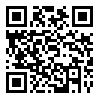<>
Volume 7, Issue 3 (8-2024)
JSAL 2024, 7(3): 101-123 |
Back to browse issues page
Download citation:
BibTeX | RIS | EndNote | Medlars | ProCite | Reference Manager | RefWorks
Send citation to:



BibTeX | RIS | EndNote | Medlars | ProCite | Reference Manager | RefWorks
Send citation to:
Mostafavi Nia S M R, Jenabi L, Khorasani N. (2024). An Examination of Equivalence in Translating "Maf'ul Lahu" Based on Antoine Berman’s Theory; A Case Study on Naser Makarem Shirazi’s Translation of the First 100 Sermons from Nahj al-Balagha [In Persian]. JSAL. 7(3), 101-123.
URL: http://jsal.ierf.ir/article-1-153-en.html
URL: http://jsal.ierf.ir/article-1-153-en.html
1- Associate Professor and Faculty of Arabic Department, Faculty of Literature and Humanities, University of Qom, Qom, Iran , dr.mostafavi@pooyesh.ac.ir
2- Level 3 of Qom Seminary (Jameat Al-Zahra) in Tafsir, Qom, Iran
3- Master's degree in Tafsir Asari (Narrative Interpretation), Faculty of Theology, University of Qom, Qom, Iran
2- Level 3 of Qom Seminary (Jameat Al-Zahra) in Tafsir, Qom, Iran
3- Master's degree in Tafsir Asari (Narrative Interpretation), Faculty of Theology, University of Qom, Qom, Iran
Abstract: (1890 Views)
Numerous theories addressing translation challenges have been proposed, each providing a distinct framework for mitigating translation issues. One notable theory is that of Antoine Berman, who focuses on a text-centered approach and introduces the notion of "disruptive tendencies." He underscores the significance of adhering closely to the source text and advocates for translators to maintain fidelity to both its form and content. Berman is particularly critical of prevalent practices such as domestication and denigration of foreignization within translation processes. A specific challenge faced when translating from Arabic to Persian involves rendering "maf'ul lahu" and its various forms; translators must ensure precise equivalence while considering the speaker's intent. The term "maf'ul lahu" inherently implies causality—a concept that Persian translators frequently find difficult to convey accurately. Explicitly indicating causality may disrupt the fluidity and elegance of the target text, while omitting it can result in an inaccurate representation. This study seeks to conduct a descriptive and analytical critique regarding how "maf'ul lahu" is translated in Naser Makarem Shirazi’s rendition of the first 100 sermons from Nahj al-Balagha, with a focus on Berman’s theoretical framework. From among Berman’s twelve components related to disruptive tendencies, three significant elements—rationalization, expansion, and clarification—are selected for detailed analysis concerning sermons featuring "maf'ul lahu," thus assessing how faithfully the translator adheres to the original text. Although Makarem Shirazi’s overall approach can be characterized as source-oriented, he often fails to translate "maf'ul lahu" accurately in numerous instances. Furthermore, contextual analysis indicates that he does not consistently achieve appropriate equivalences aligned with Berman’s source-oriented perspective. His application of clarification and expansion techniques has led to distortions in several cases; additionally, he has modified structural elements as a form of rationalization. While some alterations may be necessary for achieving greater fluency in translations, they are nonetheless viewed as distorting factors according to Berman’s theoretical framework.
Keywords: Nahj al-Balagha, Naser Makarem Shirazi's Translation, Antoine Berman, Translation of Maf'ul Lahu
Type of Study: Research |
Subject:
Discourse Analysis
Received: 2023/12/29 | Accepted: 2024/06/28 | Published: 2024/09/4
Received: 2023/12/29 | Accepted: 2024/06/28 | Published: 2024/09/4
References
1. Holy Quran
2. Nahj al-Balagha
3. Ahmad bin Faris, (1983) Al-Maqayis al-Laghga, Qom: School of Islamic Studies [In Arabic].
4. Ahmadi, M,. (2013) An introduction to the Deconstructive Trends of Antoine Berman, Critical Language and Literary studies, 6(1), 1-19.
5. Al-Harani, A., (1999) Tuhf al-Aqool on Aal al-Rasoul, 7th edition, Tehran: Katabchi Publications. [In Arabic]
6. Farahzad, F., (2012), Theoretical Framework for Translation Criticism, Translation Studies, 1 (3).
7. Ghazi Zahid, Z., (2005), Arabs of Nahj al-Balagha and Bayaneh and Meaning, Al-Najaf: Al-Tamimi Publications. [In Arabic]
8. Heydari, M., (2002), Ma'jam al-Aafal al-Mutadawelah, Qom: Al-Marqas al-Alami for Islamic Studies. [In Arabic]
9. Jami, A., (Not Date) Muljami's description of text al-Kefayat al-Nahw, Beirut: Dar Ehya al-Tarath al-Arabi. [In Arabic]
10. Johari, I., (1997) Al-Sahah, Beirut: Darul Uloom Al-Mulayin. [In Arabic]
11. Karimian, F., Aslani, M., (2013) The role of loyalty to an author in translation (a comparative review of Qasim Rubin's translations of Marguerite Duras's works), Language and Translation Studies Quarterly, 44 (3).
12. Khalekian, U., (2011), The Arabic Dictionary of Nahj al-Balagha, Tehran: Nahj al-Balagha Foundation Publications. [In Arabic]
13. Mandi, J., (2010), An introduction to the translation studies of Elahe Sotoudeh and Faridah Haqbin, Tehran: Elam Publications. [In Persian]
14. Mehdi Paror, F., (2008) A comment on the emergence of translation theories and the examination of the text distortion system according to Antoine Berman, Book of the Month and Literature, No. 41.
15. Mustafavi, H., (2008) Researching the Words of the Holy Qur'an, Beirut: Dar Al-Katb Al-Alamiya. [In Arabic]
16. Nasri Mohammad, H., Modares, S., (2023) Analysis of equivalence strategies in translations of banking texts using the linguistic approach of structuralist semantics, Persian language and literature, 54 (15), 251-280.
17. Safai, G., (2007), The Beginning of Grammar, Qom: General Directorate of Al-Hawza Al-Alamiya. [In Arabic]
18. Safavi, K., (1992), Seven Speeches About Translation, 9th edition, Tehran: Markaz Publications. [In Persian]
19. Shahram D., Masboug, S., Bakshesh, M., (2016) A critical evaluation of Nahj al-Balagha translation by Shahidi based on Antoine Berman's "deforming tendencies", QHTS, 2 (4), 99-120.
20. Tahmasbi, A., Jafari, S. (2014). Researching in translation from Arabic into Persian relying on the process of "moral equivalence'' (case study of the novel Al-Sukariya), Translation Researches in the Arabic Language And Literature, 4(10), 97-118.
21. Umm al-Binin, K., (2012) Dictionary of Arabs and the Words of Nahj al-Balagha, 1th edition, Tehran: Nahj al-Balagha Foundation Publications. [In Persian]
Send email to the article author
| Rights and permissions | |
 |
This work is licensed under a Creative Commons Attribution-NonCommercial 4.0 International License. |







